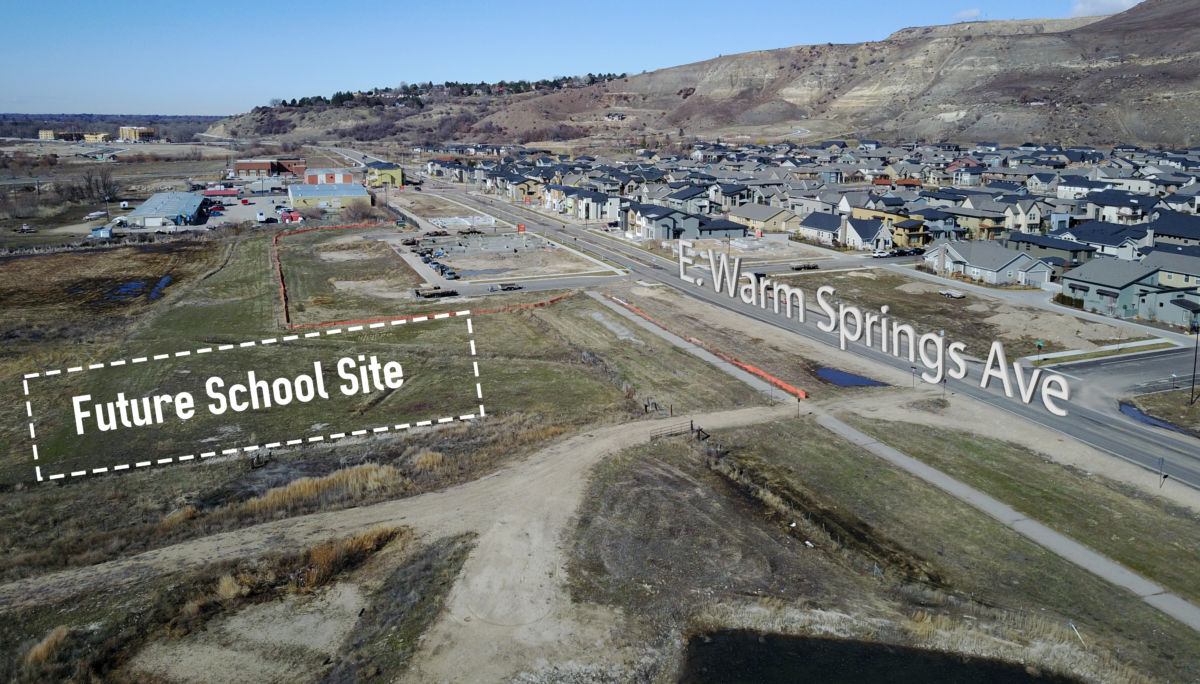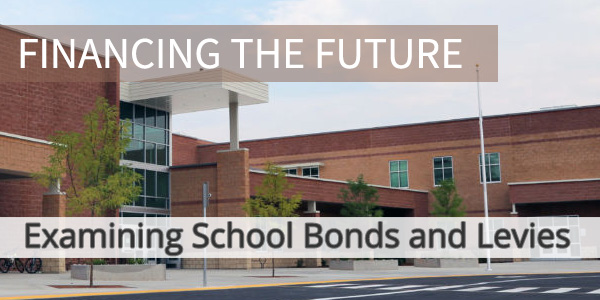
More than a decade ago, voters approved a $94 million bond. Nancy Gregory was on the Boise School Board at that time.
“We finished all the projects early. We built several junior highs, did some historic remodels, new elementary schools at several sites,” Gregory says. “You can drive around the Boise School District and see what that bond built.”
But at the end of the day, what do bricks-and-mortar have to do with reading-writing-and-arithmetic? Gregory says the new buildings have led to results in the classroom.
“I think that it has made a significant difference when you invest in the workplace environment for students and teachers,” says Gregory. “Student achievement is on an increase in the district. I mean that’s our goal. So the facilities represent where they spend six to eight hours of their day, and it does have an impact.”
 Gregory is now the Chair of the School Board, and this year’s list is even more ambitious. And a bond, she says, is the only way to do it.
Gregory is now the Chair of the School Board, and this year’s list is even more ambitious. And a bond, she says, is the only way to do it.
“This cannot be accomplished with bake sales. This is the only funding stream that schools can use to build buildings. We’re not getting money from the feds or money from the state.”
With this year’s bond, the Vice Chair of the Board, Maria Greeley, says every school in the district would receive facility money.
“There will be 22 major capital improvements. Some of them remodels, some new builds.”
If she could pluck a citizen out of the voting booth and place them anywhere in the district, where would it be?
“I would ask people to go see is Whittier Elementary,” Greeley says. “It is a fantastic program where we got dual language, but it is so over capacity that I want to say half of the students are in portable buildings right now.”
At Whittier Elementary, Maria Castillo is leading a Spanish-language immersion class. These are first graders. One day they take their math or science instruction all in Spanish. And the next day, whatever the subject they’re learning, it’s all in English.
Fernanda Brendefur, the principal at Whittier, explains “there’s so much research on the benefits of dual language. Anytime you do something in two languages, it just, your brain develops in ways that monolingual brains don’t.”
Timothy Goode is one of those first-grade students. Standing outside at the afternoon pickup, he sums up his day in a word: “English.”
His father Simon is impressed. “It’s just so fun. You know when you hear, Timmy start, he won’t, he will not do it on spec, but every now and again he’ll start rattling off in Spanish. And it is absolutely awesome. I love it.”
Simon and mother Missy go out of their way to make sure their youngest has this opportunity for dual-language immersion. They live miles away, near Longfellow Elementary, where their middle child attends. Their oldest is at North Junior High.
Missy sees the need for a rebuild – inside and out – pointing to the chaos during after-school pickup.
“There’s no pickup location. So parents are parking all over the place. Cars are driving through the crosswalk as the kids are trying to go. Just the whole setup of it is not, I mean, it’s not as safe as it could be.”
And back inside, it’s just as chaotic. Kids are playing basketball in the multi-purpose room.
“We have just one room for a gymnasium, a cafeteria and a performing arts center,” Missy explains. “That just isn’t suitable for all of these kids. When you go see the lunch line, it’s like a line at Disneyland. It goes so far out. Because we can’t even fit the kids in the . . . in the café-gym-a-torium. So the school building. Well, we need a whole new building to serve the needs of the kids.”
And that’s what the bond would bring. An entirely new building, says principal Brendefur.
“A cafeteria that was built to feed 300 kids, has to feed 550. It’s just too small. If you walk up and down our halls we have refrigerators and freezers in the hallway.”
At one of the refrigerators in the hallway, Timothy’s teacher, Kelly Rich, is having trouble saying good night to a colleague.
“Where she’s standing right there, if I’m in my classroom, she can’t hear me talking because the refrigerators are all so loud,” Rich says. Laughing, she estimates the distance as six to 10 feet.
Those refrigerators are essential, since about nine out of 10 kids at Whittier Elementary qualify for free or reduced lunch. Brendefur says, “We draw from a diverse population both socio-economically, ethnically, linguistically.”
And a rebuild is not just for today, but for tomorrow. Three hundred new students entered the Boise School district this year, and experts predict continued growth in the student population over the next decade.
Click here to listen to the audio of this story.
Idaho Education News and Boise State Public Radio are partnering to produce a week-long series about how the statewide elections will affect students, communities and taxpayers.
Here are links to the entire series:
- Across Idaho, a $714 million election day looms
- The legacy of bonds in Boise
- A look at two Boise elementary schools embracing the wrecking ball
- The bond issue ‘supermajority:’ a debate as old as Idaho
- What it takes to pass a school bond and what it could mean to your taxes
- How a Boise career-technical school prepares students for jobs in high demand
- Listen: A conversation on school bonds with Stan Olson
Upcoming events
Thursday, March 9
Forum: Education and Elections: a K-12 Roundtable — 11:45 a.m -1:15pm, The Grove Hotel, Ballroom 2nd Floor. The City Club of Boise event will feature Boise district Superintendent Don Coberly, West Ada Superintendent Mary Ann Ranells and Kuna Superintendent Wendy Johnson.
Friday, March 10
Forum: Donuts and Democracy: A discussion on education policy and funding. Panelists will be Don Coberly, superintendent of the Boise school District, Karen Echeverria, executive director of the Idaho School Boards Association, Sen. Janie Ward-Engelking, D-Boise, and Clark Corbin, reporter for IdahoEdNews.org. IdahoEdNews.org senior reporter Kevin Richert will moderate. The event is free and open to the public from 9 to 10 a.m. at the Yanke Research Center, 220 ParkCenter Blvd. The event will be broadcast live on EdNews’ Facebook page. And yes, there will be free donuts and coffee.
